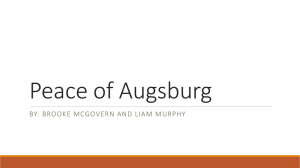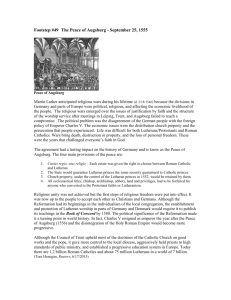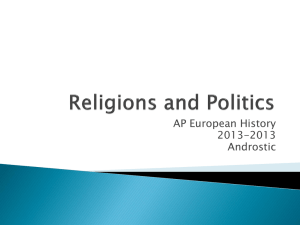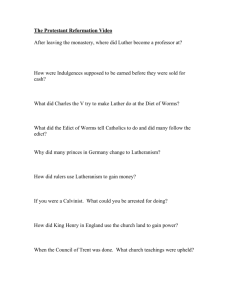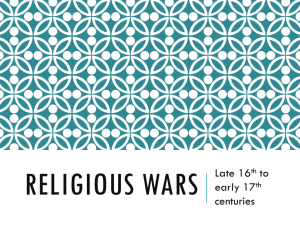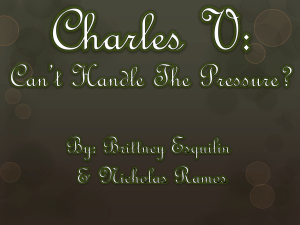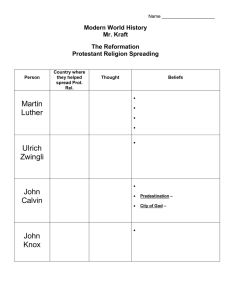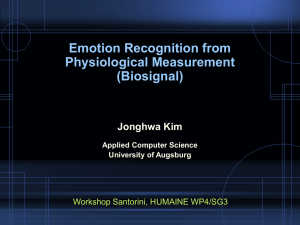Peace of Augsburg - River Dell Regional School District
advertisement
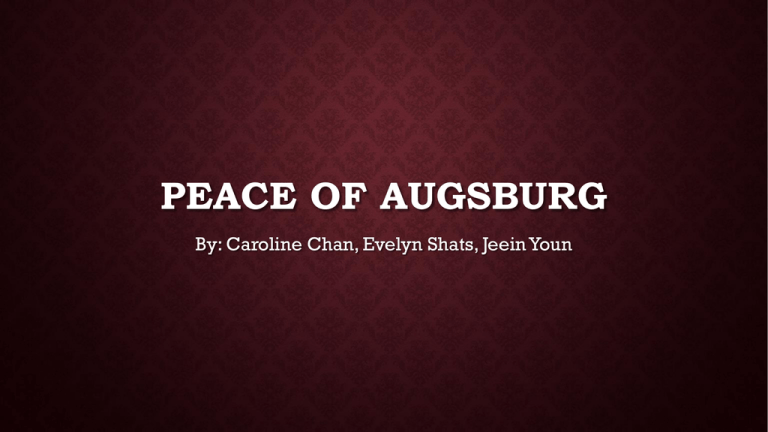
PEACE OF AUGSBURG By: Caroline Chan, Evelyn Shats, Jeein Youn THE PEACE OF AUGSBURG • Also called the “Augsburg Settlement” • A treaty between the Catholics and the Lutherans • Specifically between Charles V and the Schmalkaldic League • The Schmalkaldic League was an alliance of Lutheran Princes THE PEACE OF AUGSBURG (CONT.) • Stated that each individual prince can choose the religion of his area • Was a political settlement about the split of Christianity between the two beliefs • First permanent legal basis for the existence of Lutheranism and Catholicism in Germany • It was published and made known on September 25, 1555 by the Diet of the Holy Roman Empire • Lutheranism was finally formally recognized THE PEACE OF AUGSBURG ASSEMBLY • The prince or the king of each state selected either Catholicism or Lutheranism as their official religion of their land • Catholic bishops had to give up their property if they turned Lutheran • Anyone who was not satisfied, were given a period of time to be free emigrate to a new region • Weakened the authority of the Holy Roman Emperors • Weakened Germany’s ability to unite as a nation CHARLES V • Holy Roman Emperor • King of Spain • He wanted to work out religious differences under the general council of the Catholic Church • Was against the treaty • The one to proclaim the Diet that opened in Augsburg on February 1555 SCHMALKALDIC LEAGUE • Alliance of Lutheran Princes • The Princes converted to Lutheranism, and they convinced Charles V to allow each Prince to choose between the two faiths for his own land • Two of the most powerful Protestant rulers of the time were members of this league • They were Philip I and John Frederick I RELIGIOUS DISUNITY IN EUROPE • It resulted from the fighting between Protestant and Catholic forces • It finalized the division in Christendom between Protestantism and Catholicism • Rulers could determine the religion of the lands they governed • Possible for Europe to be split between Protestantism and Catholicism without continuing struggle or conflict • People could migrate to areas which supported their faith, so the division between religions could be kept peacefully, but the division would remain permanent. BIBLIOGRAPHY • http://my.hrw.com/tabnav/controller.jsp?isbn=0030937752 • http://www.britannica.com/EBchecked/topic/42767/Peace-of-Augsburg • http://www.christianity.com/church/church-history/timeline/1501-1600/peace-ataugsburg-11629989.html • http://kids.britannica.com/comptons/art-181456/Charles-V-Holy-Roman-emperor • http://msaculturaltours.com/BAVARIA/index.html
